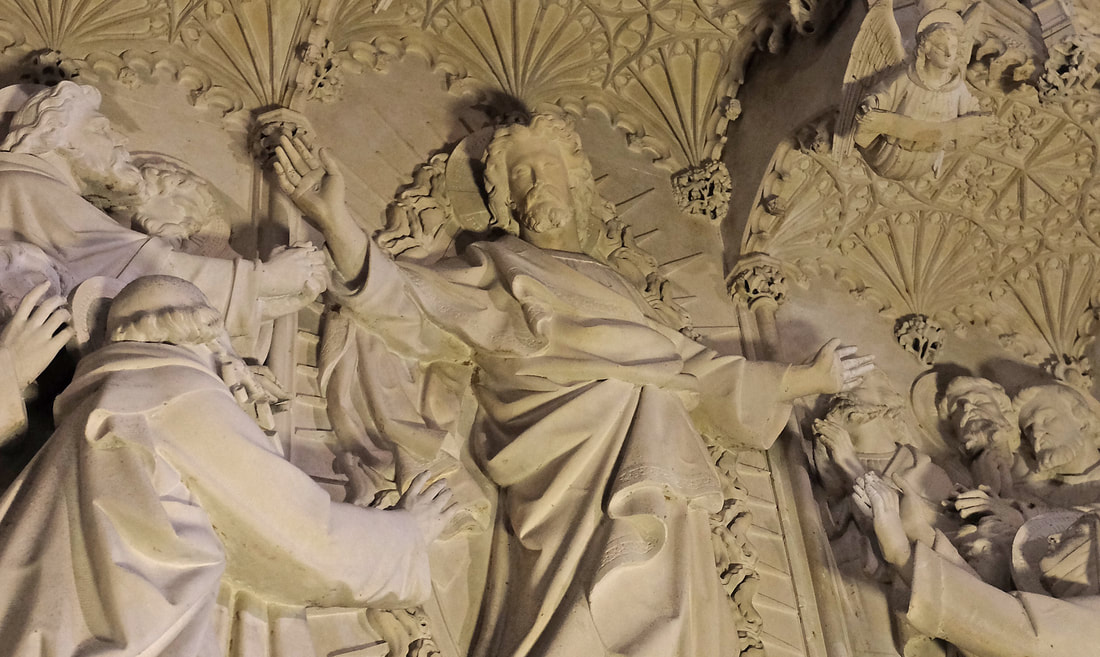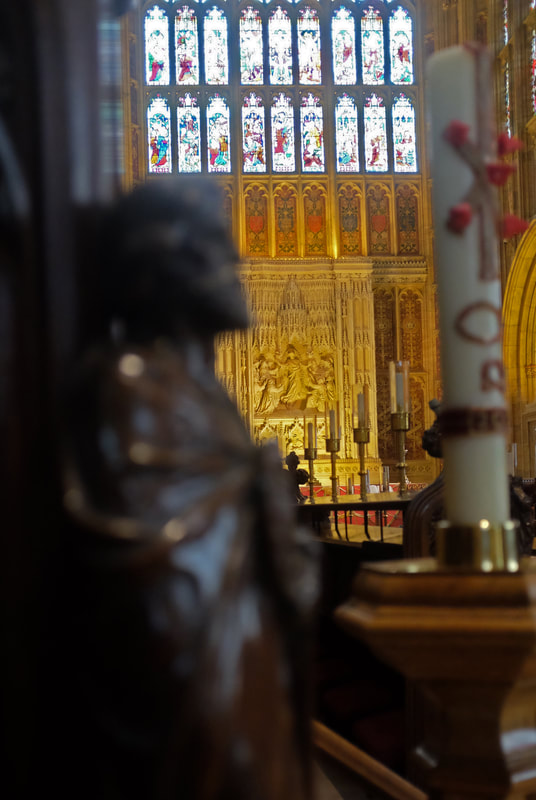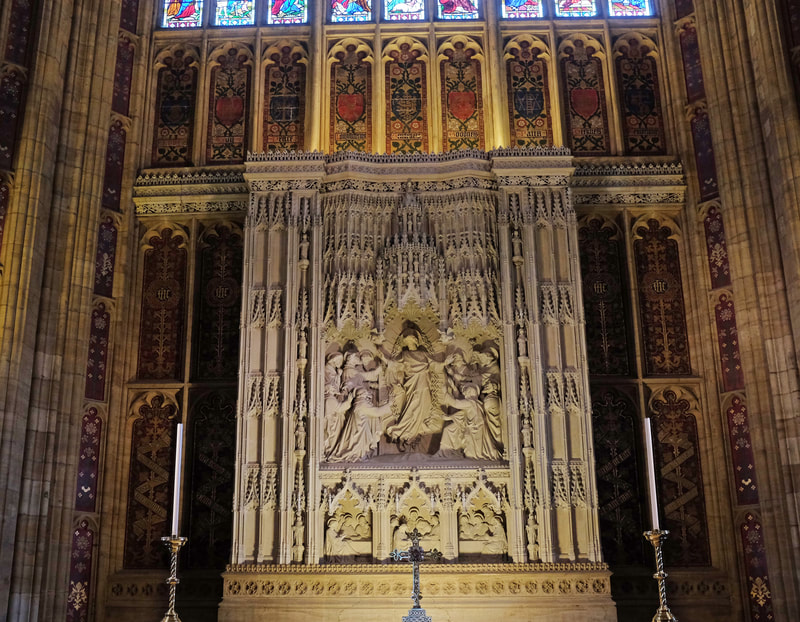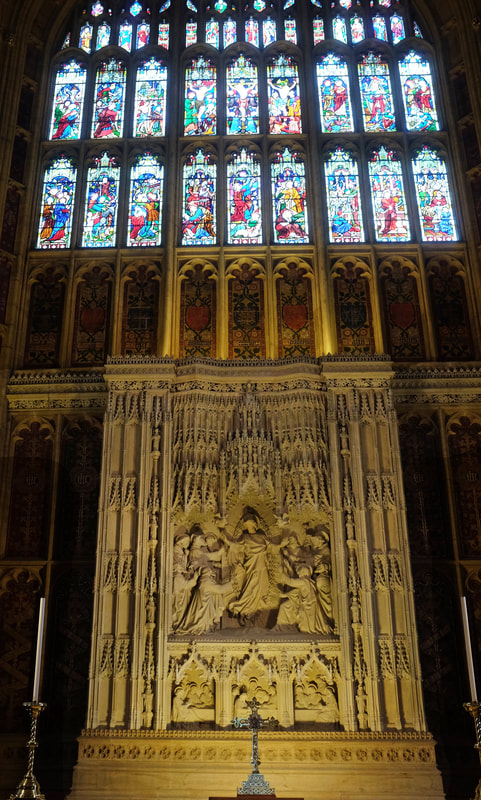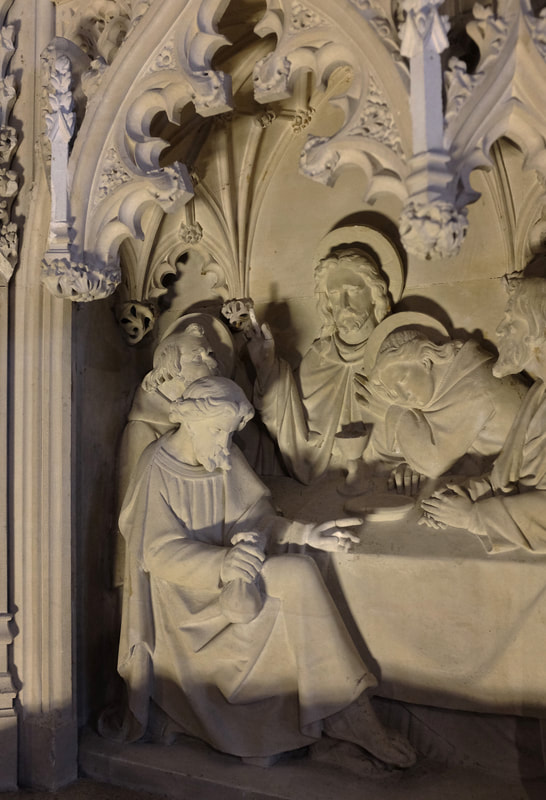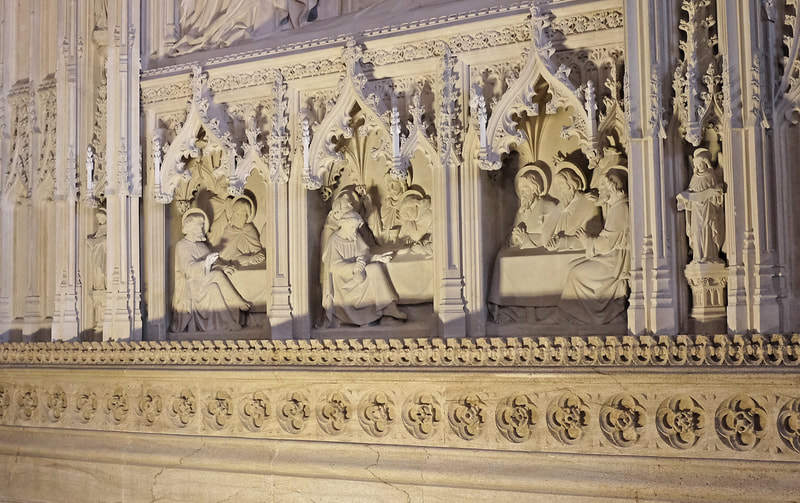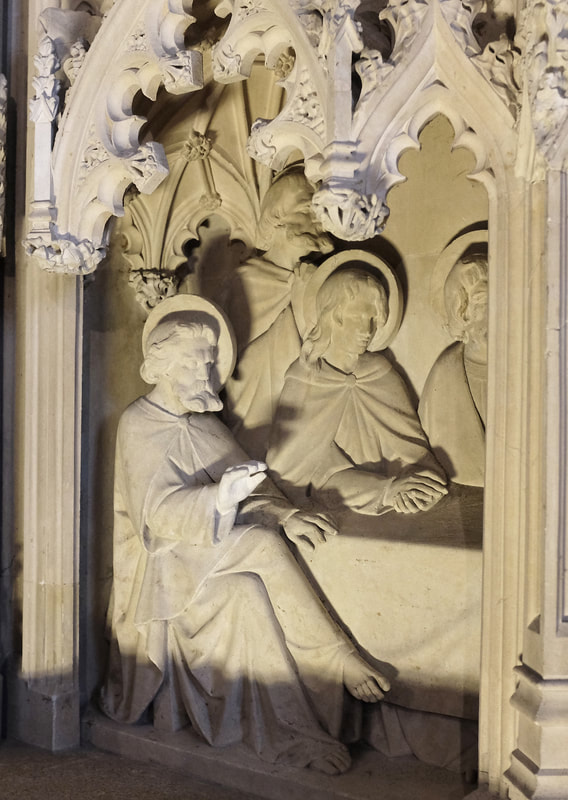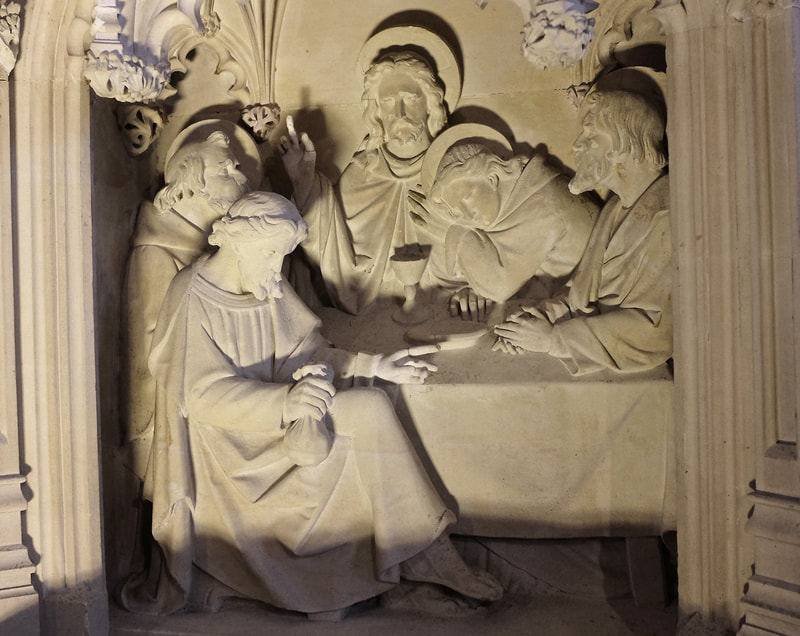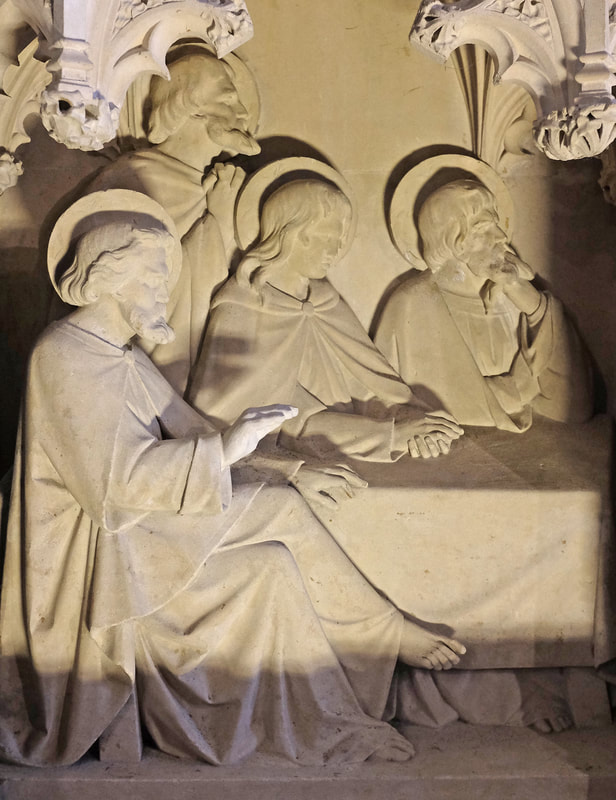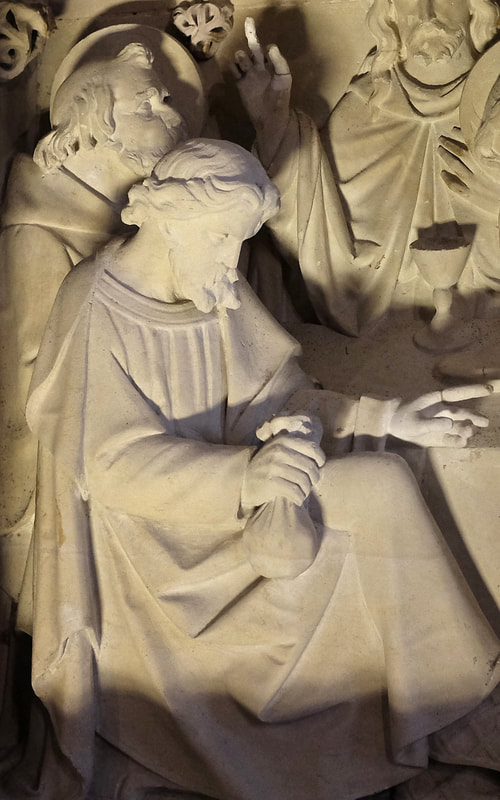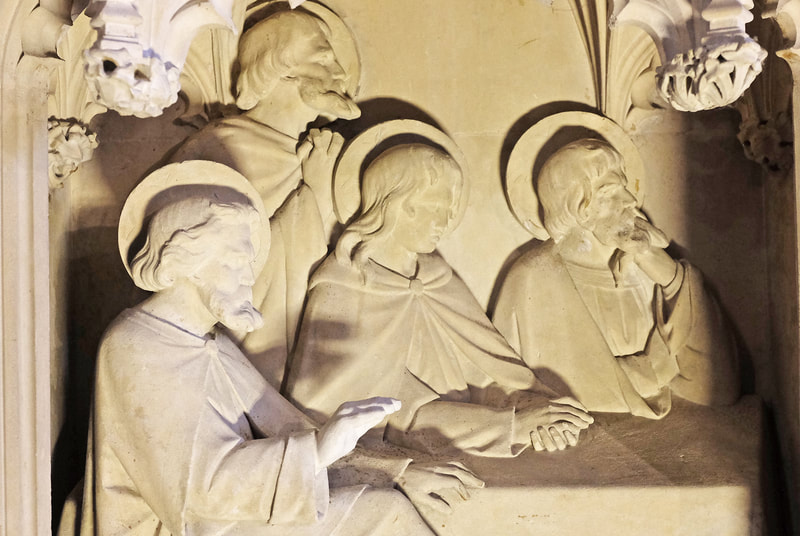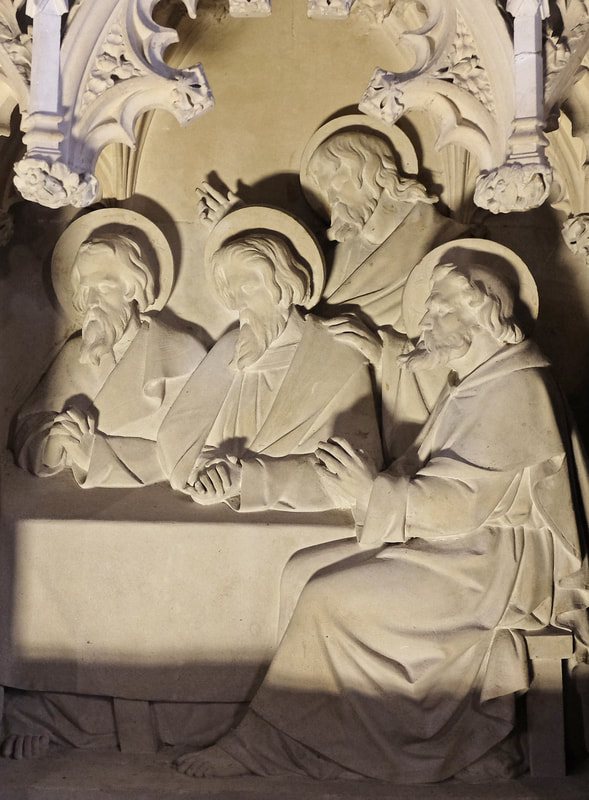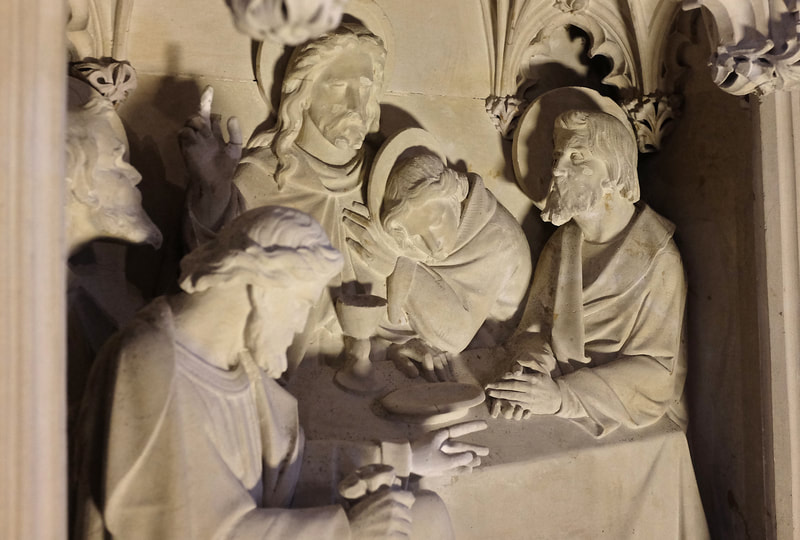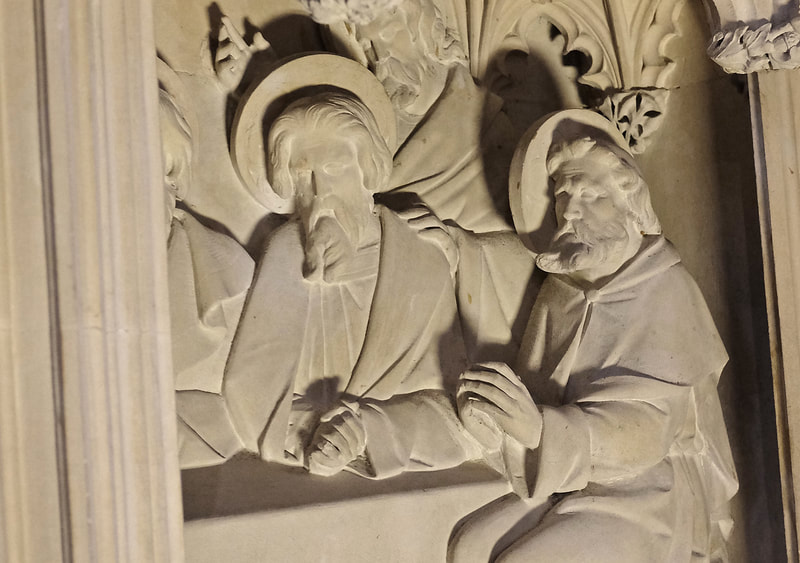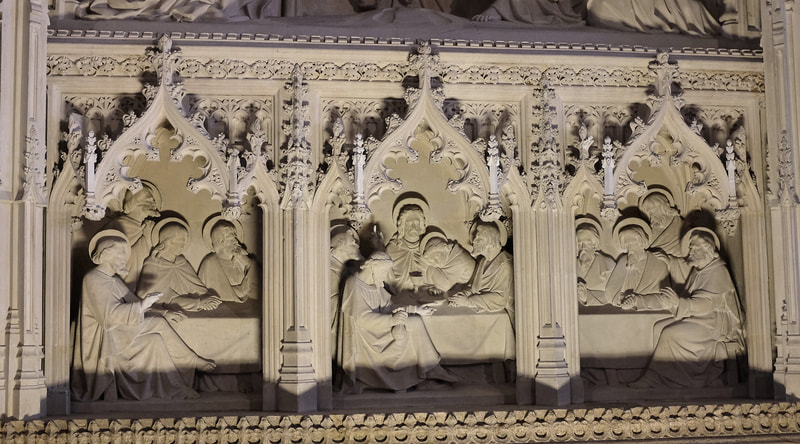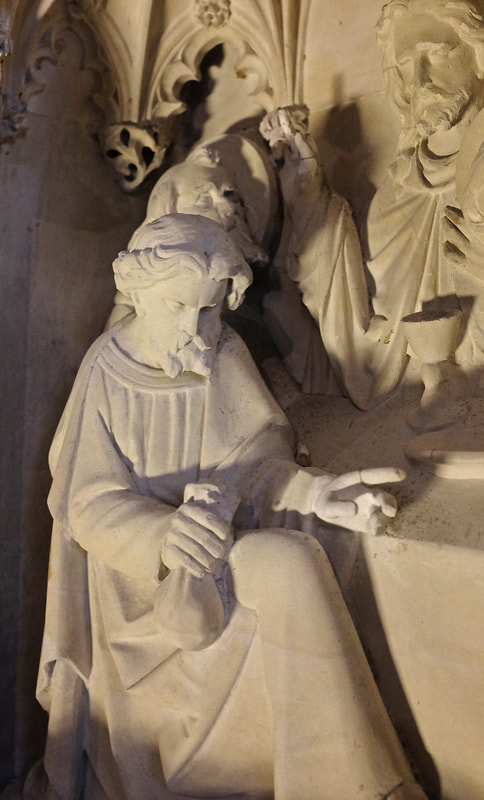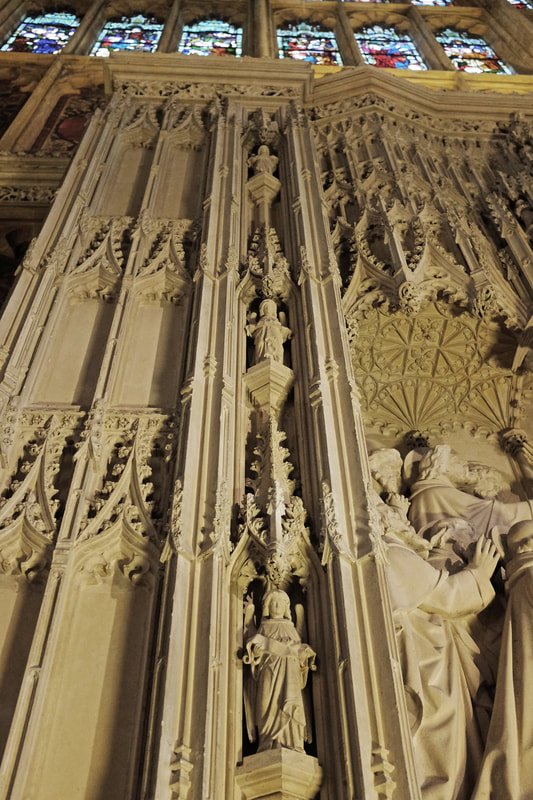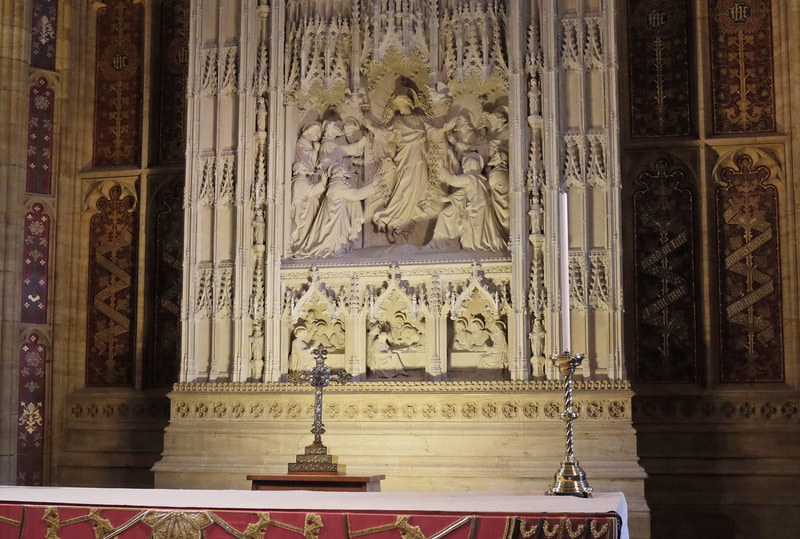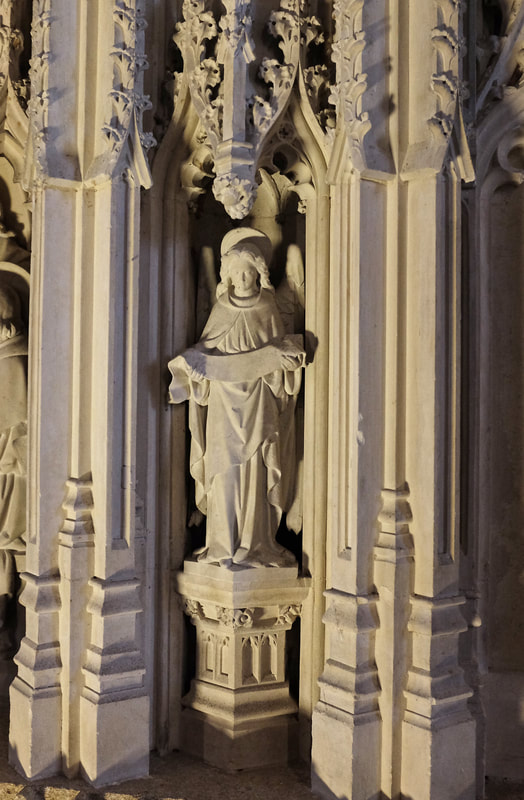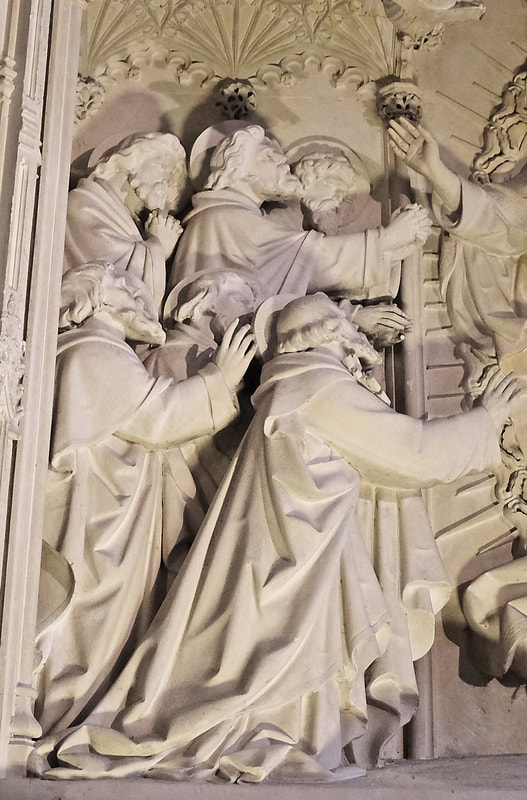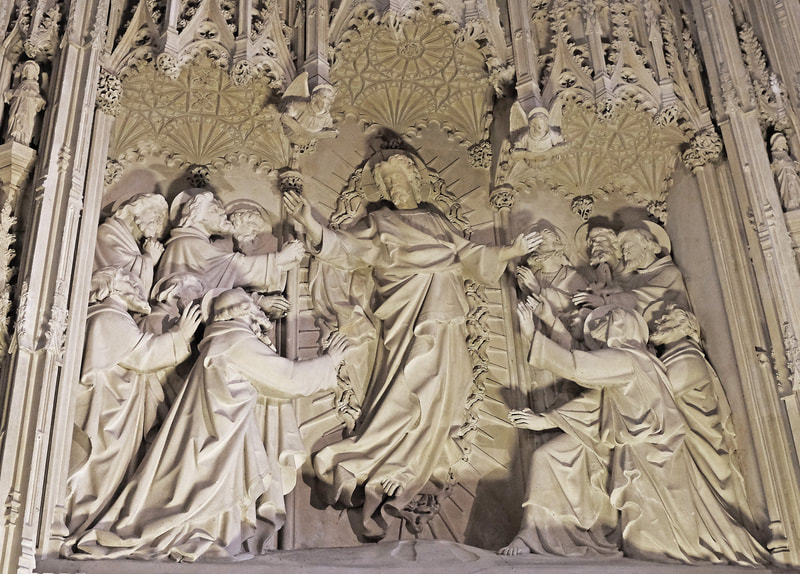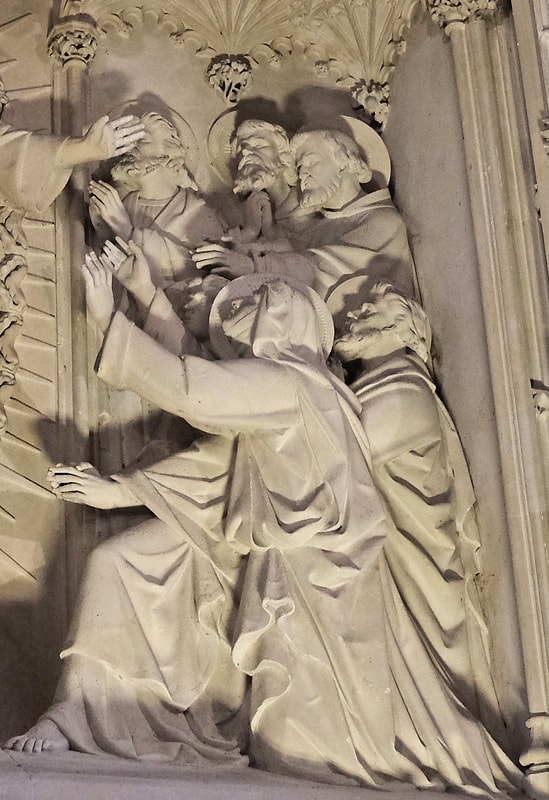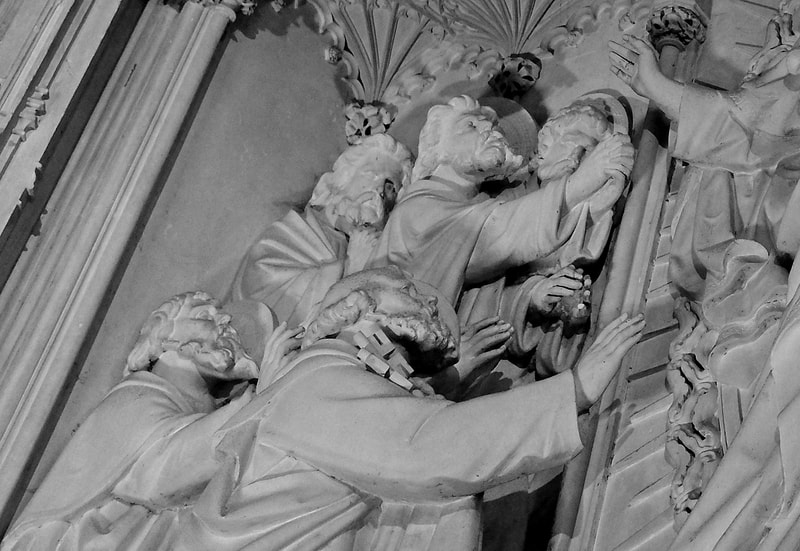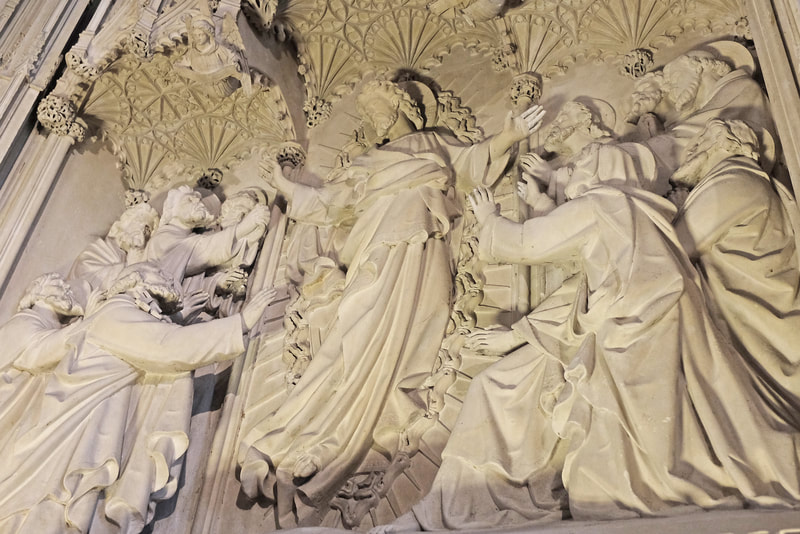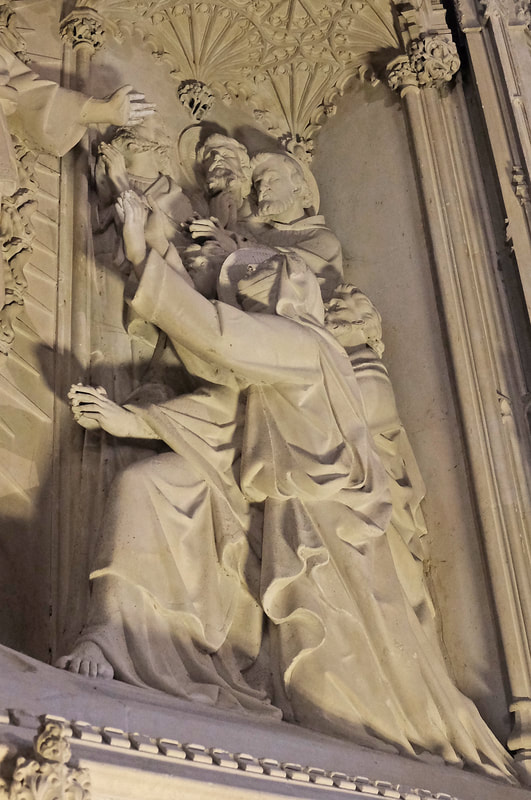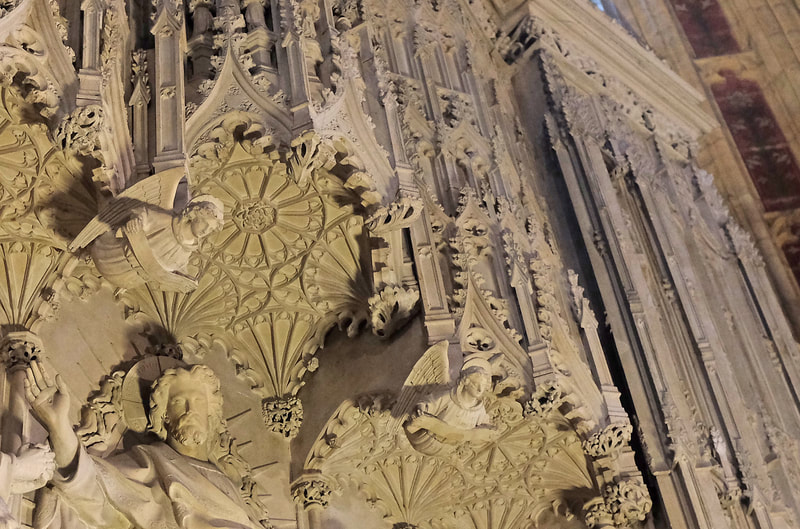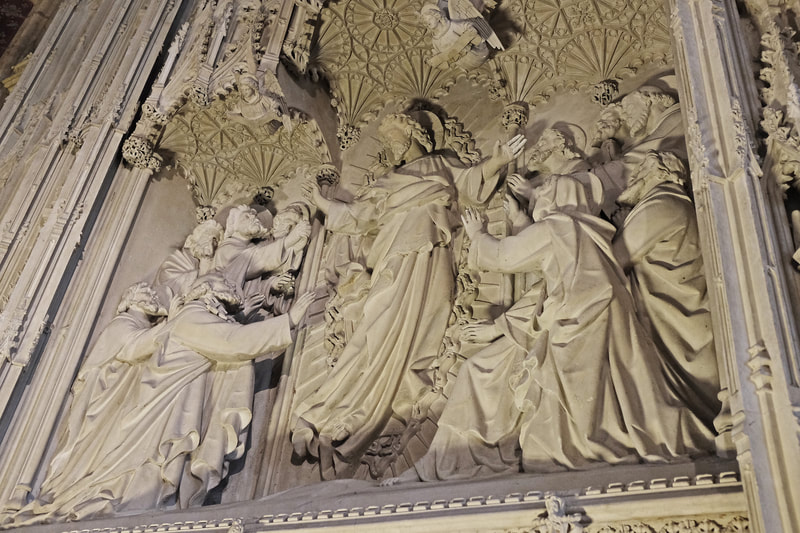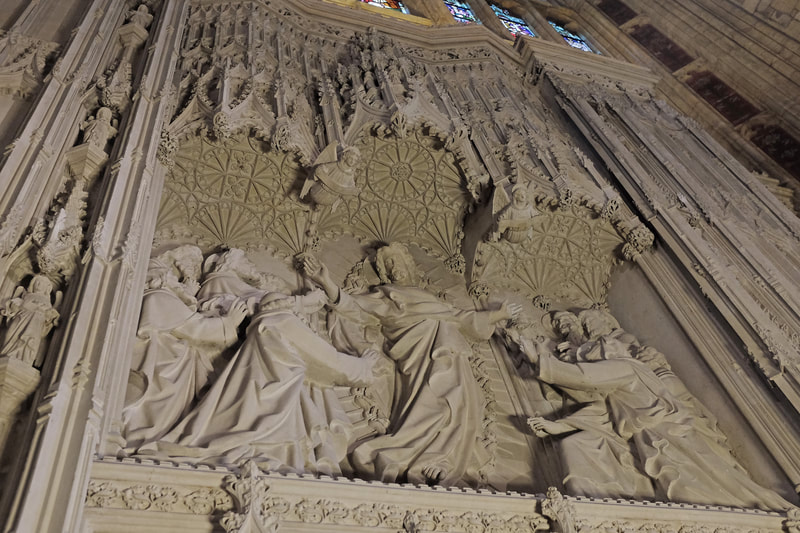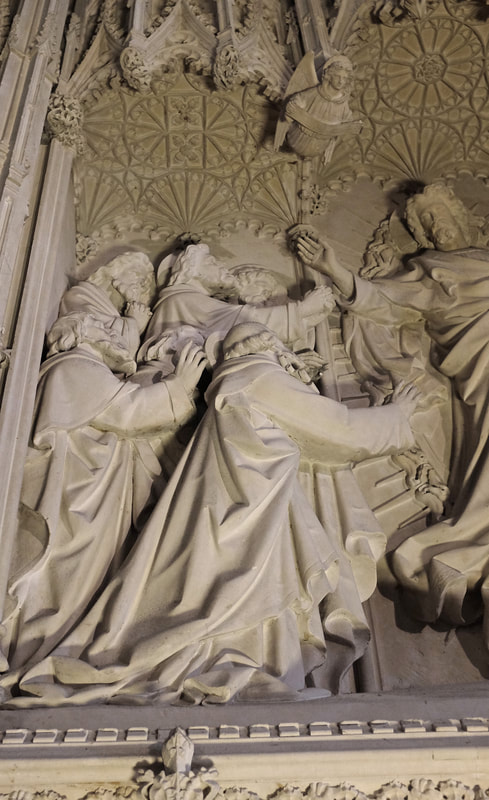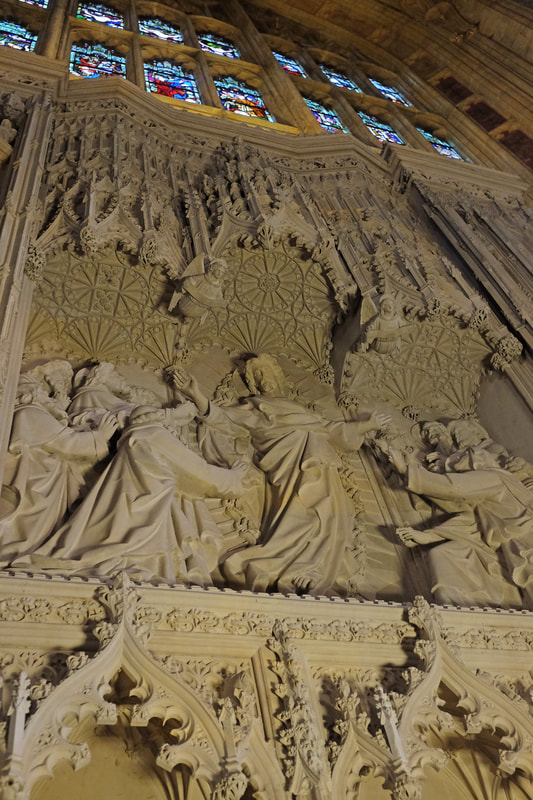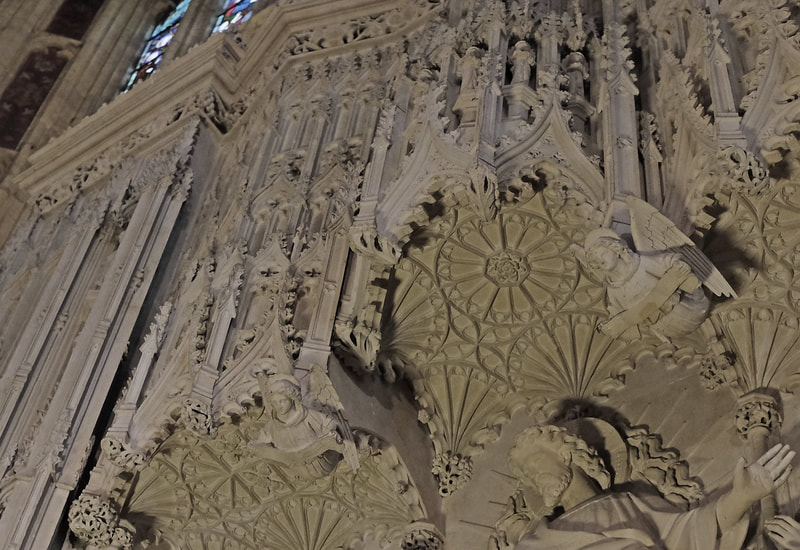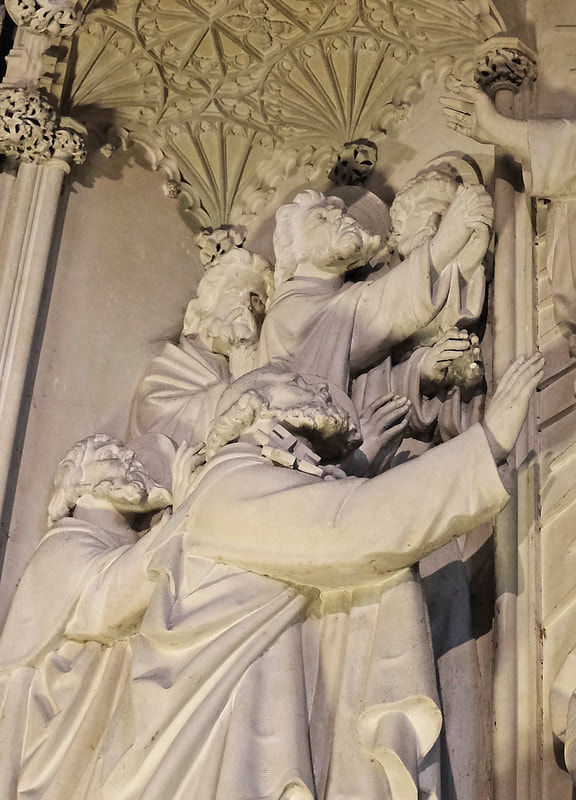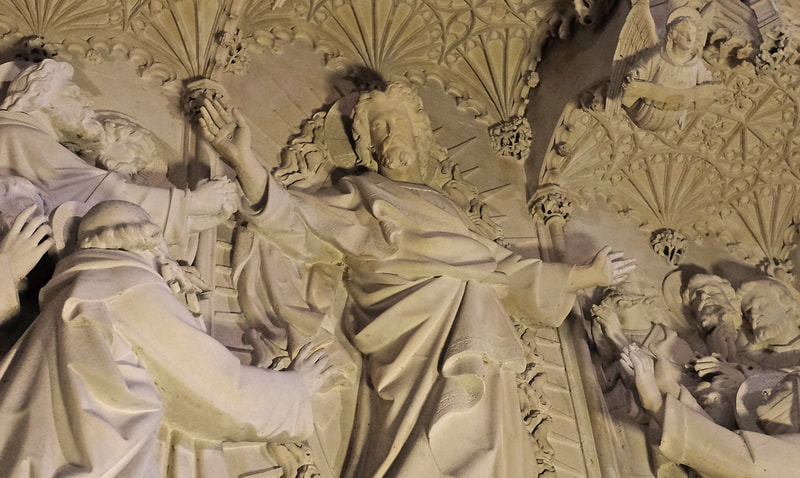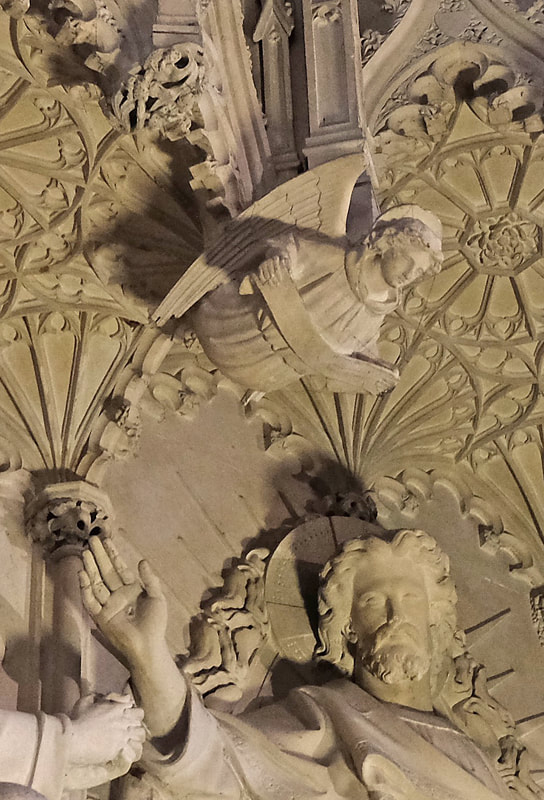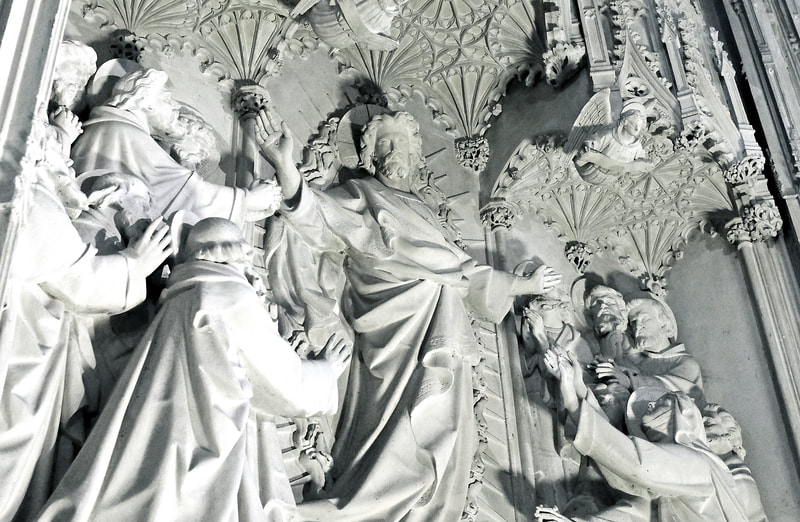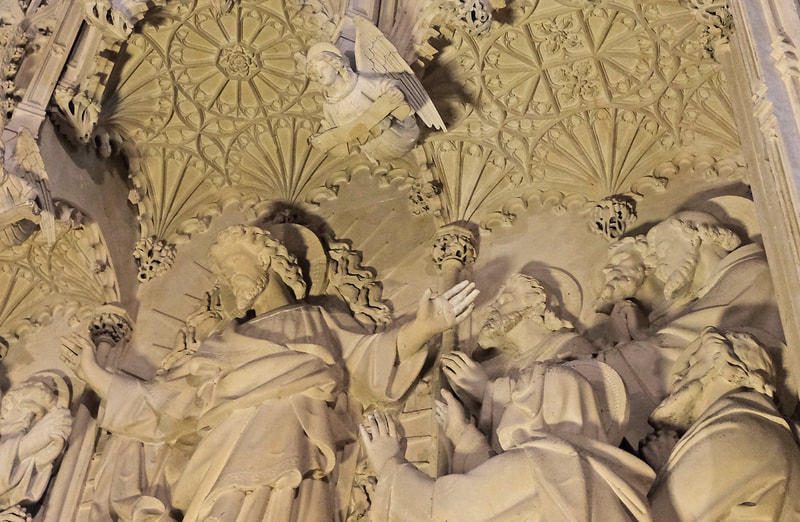Sherborne Abbey, Reredos 1858
22.05.1858
The Illustrated London News reports upon Sherborne Abbey “ Sherborne Minster restored – The Interesting, truly beautiful, and ancient pile, Sherborne Minster, has been for some time been under restoration, and is now fast nearing completion. The first portion of the interior, the nave, was commenced under the able hand of the late Mr. Carpenter, of London; and the choir is now being restored by his successor, Mr. W. Slater, architect, of Carlton chambers, Regent street, who has followed out the work with great skill and care. Where practicable, every boss of the original has been carefully restored and replaced, so that not a tittle of the ancient characters might be lost. The ugly screenwork of the seventeenth century has been removed and a fine, canopied, reredos has taken its place: this is of Caen stone. The centre subject represents the ‘Ascension of our Saviour’ the lower panels ‘The Last Supper’, executed in relief by Mr. Forsyth, from designs by Mr. J. R. Clayton. The Bishop’s throne and sedilia are, as well as the reredos, from the chisel of Mr. Forsyth, of Guilford Street, Russell Square “
25.08.1858
The Taunton Courier reports upon the ‘Altar piece’ at Sherborne Abbey “ The old Norman-oak Corinthian Altar-piece has been removed, and in its place has been reared a Caen stone sculptured reredos, that, we believe, has no fellow in the kingdom. It is the work of Mr. Forsyth, of Guilford Street, and as an art treasure extorts the admiration even of those who disapprove of images of Protestant churches. It is nearly 19 feet high….the principal figures nearly 4 feet high….and cost was £565“
09.10.1858
The Illustrated London News has a full page engraving of the reredos at Sherborne Abbey and the following words “ The reredos in question is undoubtedly one of the most remarkable and extensive that have been erected in modern times. It is literally a maze of tabernacle and traceried sculpture, and this principally as a framework for the two large subjects in alto-relief of the ‘Ascension’ and ‘Last Supper’ which form the main features of the work. The reredos was executed by Mr. James Forsyth, of London, from the designs of W. Slater esq, architect…”
The Illustrated London News reports upon Sherborne Abbey “ Sherborne Minster restored – The Interesting, truly beautiful, and ancient pile, Sherborne Minster, has been for some time been under restoration, and is now fast nearing completion. The first portion of the interior, the nave, was commenced under the able hand of the late Mr. Carpenter, of London; and the choir is now being restored by his successor, Mr. W. Slater, architect, of Carlton chambers, Regent street, who has followed out the work with great skill and care. Where practicable, every boss of the original has been carefully restored and replaced, so that not a tittle of the ancient characters might be lost. The ugly screenwork of the seventeenth century has been removed and a fine, canopied, reredos has taken its place: this is of Caen stone. The centre subject represents the ‘Ascension of our Saviour’ the lower panels ‘The Last Supper’, executed in relief by Mr. Forsyth, from designs by Mr. J. R. Clayton. The Bishop’s throne and sedilia are, as well as the reredos, from the chisel of Mr. Forsyth, of Guilford Street, Russell Square “
25.08.1858
The Taunton Courier reports upon the ‘Altar piece’ at Sherborne Abbey “ The old Norman-oak Corinthian Altar-piece has been removed, and in its place has been reared a Caen stone sculptured reredos, that, we believe, has no fellow in the kingdom. It is the work of Mr. Forsyth, of Guilford Street, and as an art treasure extorts the admiration even of those who disapprove of images of Protestant churches. It is nearly 19 feet high….the principal figures nearly 4 feet high….and cost was £565“
09.10.1858
The Illustrated London News has a full page engraving of the reredos at Sherborne Abbey and the following words “ The reredos in question is undoubtedly one of the most remarkable and extensive that have been erected in modern times. It is literally a maze of tabernacle and traceried sculpture, and this principally as a framework for the two large subjects in alto-relief of the ‘Ascension’ and ‘Last Supper’ which form the main features of the work. The reredos was executed by Mr. James Forsyth, of London, from the designs of W. Slater esq, architect…”
